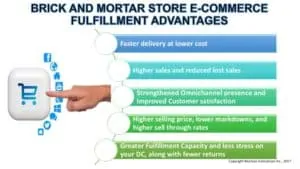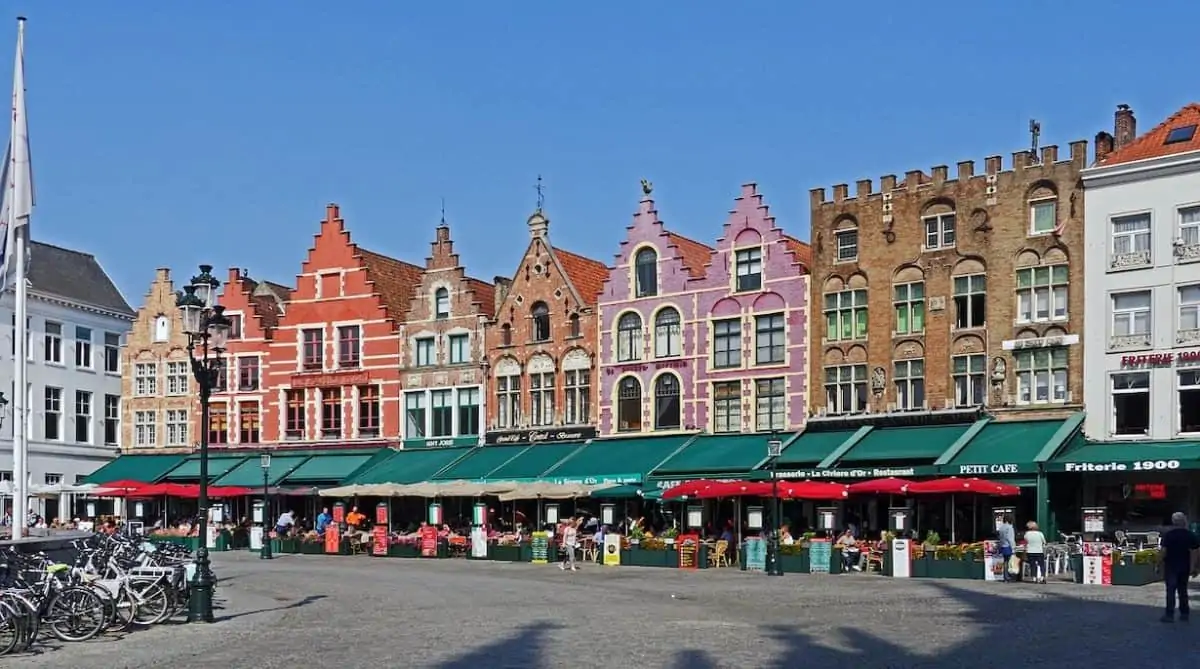Retailers with Brick and Mortar stores continue to be under tremendous pressure. Competition is intense in the fast growing Omnichannel E-Commerce world. Every week there seems to be news about how one Retailer or another is closing more of their stores when they could be using them as Distribution hubs.
And very few Retailers with Brick And Mortar stores have been able to make a profit in E-Commerce. Competitors who only sell online without physical stores appear to have an advantage with lower overhead costs.
So how can Brick And Mortar Retailers turn their stores into a competitive advantage plus a source of greater profitability?
What Challenges do Brick and Mortar Retailers Have?
Markdowns, Discounts and Lost Sales
When a store can’t sell the goods that have been shipped to them they have two choices. They can either markdown the goods or they can return the items back to the DC. In either case they are adding expense and reducing profitability.
When a store sells out of goods, and those same items are still on the shelves of a different store in the network, most likely the Retailer has lost that sale. If a customer can not seamlessly be offered that item from a different store they are likely to go elsewhere. Or they will abandon the sale altogether.
Delivery Speed and Cost
E-Commerce customers want the flexibility to choose their point of delivery. They want free delivery. But when faced with the choice of delivery speed and a shipping fee, most customers will opt for slightly longer delivery times in exchange for a lower fee. Still Amazon is offering free same day-next day delivery in more and more cities. Retailers need to be able to respond in kind.
In order to compete many retailers need to offer a free shipping option. It clearly cuts into their gross margins. The ability to negotiate lower carrier rates can be limited. A lack of any significant spend leverage across the innumerable small parcel shipping addresses is problematic.
Additionally fulfilling E-Commerce orders from your DC is likely to be slower, and more expensive.. You can’t be in every geography.
Distribution Centre Capacity and Location
Any Retailer that uses their own, or a contracted Distribution Centre(other than perhaps Fulfillment by Amazon), is faced with the reality of DC capacity limitations. That capacity may be measured in storage space, equipment, or staffing.
During the Black Friday/Cyber Monday shopping window for a very small period of the year you need dramatically higher capacity. Your costs of adding this capacity can be extensive. And your likelihood of having delays and poorer productivity are large.
Unless you are Amazon you are going to have a number of Distribution Centres geographically located, or perhaps just one DC that is centralized. But even if you have numerous DCs chances are you are not located to allow delivery the same day to every geography. Your DCs are not as dispersed as your Brick And Mortar stores will be.
Inventory Visibility and Omnichannel Availability
Many Retailers began their E-Commerce business as a separate endeavour from their Brick and Mortar store channel. As such they may have separate systems. The result is a lack of integrated visibility to their entire inventory of goods across all channels.
With the advent of Omnichannel customers want access to all of your inventory equally. And they don’t care whether it is in a DC or in a Store or at a Supplier.
As a Retailer you also need that inventory visibility. Otherwise you are likely to be understocked in some locations and overstocked in other locations, for the same skus.
Fulfillment and Replenishment Accuracy
The ability of many retailers to guess exactly what quantity of each sku should go in to each store is limited. The reality is some stores will sell items at a slower or faster pace than other stores. Again customers don’t care where that inventory is. They just want visibility to it and they want it when they want it.
Unsold goods sitting on store shelves are being discounted or returned to the Distribution Centre (adding even more cost). While in other stores that have sold out of those same goods, they have lost sales. In net the company loses both sales and profitability. Stores need the ability to fulfill orders for other stores
Turning your Brick and Mortar Stores into E-Commerce Distribution Hubs
So how can you address these challenges? One approach is to leverage the advantage that is inherent in your Brick And Mortar stores. Their physical proximity to your Customers is that advantage!
You will never be able to have Distribution Centres everywhere that your Stores are. And most of your Online only competitors, excluding Amazon, are never going to have a fulfillment solution as close as your Stores are to your customers.
There is a competitive advantage that you can create if you use your Brick and Mortar stores as Distribution hubs. And with Omnichannel inventory availability and fulfillment you will derive significant value.
The advantages are numerous:

Next Steps
E-Commerce customers want to buy what they want when they want. And they want it delivered how they want.
There are certainly challenges in setting up your Brick and Mortar stores as Distribution hubs. And there are many different models of fulfillment that can be considered (eg. Ship From Store, Pick Up In Store). We will discuss these in later blogs.
Additionally you will need clear system integration and business process synchronization across your network of Distribution hubs.
But there are many tremendous advantages. None of this means that Retailers may not have to rationalize their physical footprint. But if executed correctly you can create a point of competitive differentiation in the Omnichannel E-Commerce marketplace.


Quite an interesting read! I think this current pandemic has highlighted the concept of micro fulfillment centers. You can leverage your brick and mortar stores for faster, safer, cheaper, and more flexible fulfillment options. This way you can be located closer to the customer while cutting down on crucial last-mile delivery costs.